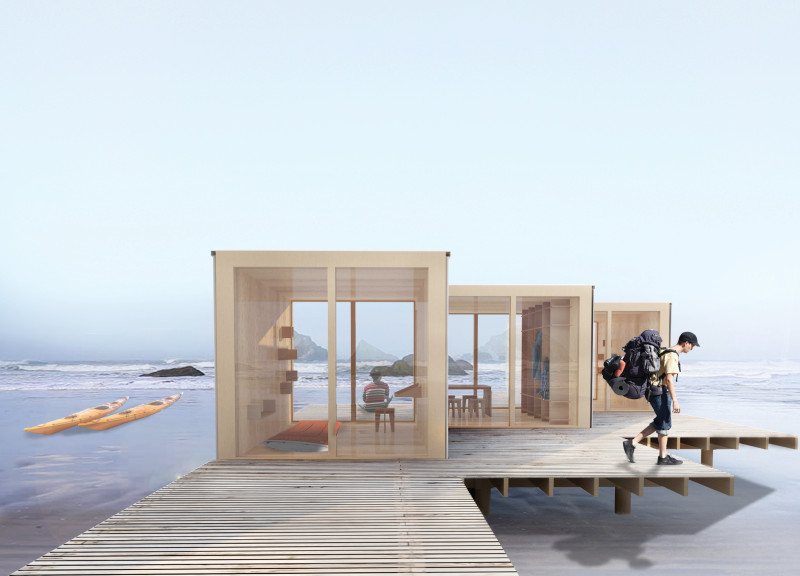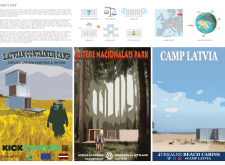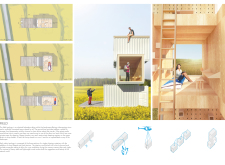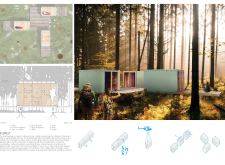5 key facts about this project
## Project Overview
The project focuses on the development of modular cabins along the Amber Road in Latvia, utilizing repurposed shipping containers to create a range of lodging options tailored to various geographical settings. The intent is to fuse local heritage with sustainable practices while enhancing the tourism experience through thoughtful architecture that engages with Latvia's natural landscapes.
## Design Strategy
The architectural approach is rooted in modularity, promoting flexibility and ecological balance. Shipping containers serve as the primary structural elements, which not only contribute to cost-effectiveness but also support the swift assembly and adaptive reconfiguration of the cabins to suit different environments.
Three distinct cabin typologies have been designed to interact intimately with their surroundings:
- **Field Prototype**: This configuration allows for expansive views and communal outdoor spaces, with upper levels designed for private sleeping quarters.
- **Forest Prototype**: Positioned discreetly among trees, these cabins prioritize minimal disruption to the natural environment and include communal areas that facilitate social interaction.
- **Water Prototype**: Situated near beaches, these structures feature large glass facades that promote an indoor-outdoor living experience, aligning with the coastal setting's recreational activities.
## Material Composition
The materials used in the project enhance both functionality and aesthetics.
- **Steel Shipping Containers**: Provide the fundamental structure, known for durability and rapid assembly.
- **Birch Plywood**: Used for interior finishes, contributing warmth and character to the spaces.
- **Glass**: Features prominently in window elements for natural light and scenic views.
- **Moss and Natural Insulation**: Employ these materials for their sustainability and thermal properties, reinforcing the project's ecological goals.
Additional materials include wood for decking to transition seamlessly into the landscape and a metal framework to ensure structural stability. Each cabin typology is crafted to respond not only to environmental needs but also to enhance the user experience through connection with nature and the surrounding community.






















































